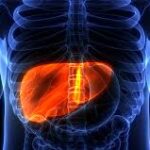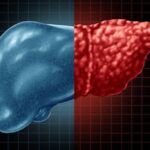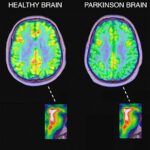Drug-Induced Liver Injury Recovery Time

Drug-induced liver injury can develop following the use of many prescription and over-the-counter drugs through a variety of mechanisms. Drug-induced liver injury has an estimated annual incidence between 10 and 15 per 10,000 to 100,000 persons exposed to prescription medications.
Drug-induced liver injury accounts for approximately 10 percent of all cases of acute hepatitis, and it is the most common cause of acute liver failure in the United States. It is also the most frequently cited reason for the withdrawal of medications from the marketplace. Drug-induced liver injury may not be detected prior to drug approval, because most new drugs are tested in fewer than 3000 people prior to drug approval. As a result, cases of DILI with an incidence of 1 in 10,000 may be missed.
When does Drug-Induced liver Injury start?
The time to onset, incubation period, or latency represents the time from the first day of drug therapy to the onset of liver injury. Typically, the latency of drug-induced liver injury is between 5 days and 3 months of starting a medication, but there are important exceptions. A very short incubation period of 24 to 72 hours can occur with hypersensitivity reactions, particularly upon re-exposure to the medication (sulfonamides, macrolide antibiotics). Furthermore, there are drugs that typically cause liver injury 3 to 12 months after starting (isoniazid, flutamide) and others for which the liver injury arises or becomes clinically evident after years of use (minocycline, amiodarone, nitrofurantoin).
Measurement of the time to onset may be difficult. The latency is usually measured from the time of starting to the time of onset of jaundice, dark urine, or detection of an elevation in serum bilirubin; but in other situations latency is measured to the time of the first symptom, which might be fatigue, weakness, nausea, poor appetite, abdominal pain, fever, rash or itching. Finally, drug-induced liver injury may occur without symptoms or jaundice and be identified only when blood test abnormalities are found. Whatever feature is used to determine the time to onset, it should be clearly stated, either as the time to onset of symptoms, time to onset of jaundice, or time to first laboratory test abnormalities. Finally, the latency may not be known or may be indefinite because the exact day that the medication was started is not known or the medication was used intermittently.
Drug-Induced Liver Injury Recovery Time
The time to recovery represents the time from stopping the suspected drug to full recovery from liver injury. Usually, drug-induced liver injury starts to resolve within a few days to a week of stopping therapy. In some instances, the resolution is quite rapid (acetaminophen, niacin), but in most cases, the injury does not fully resolve for several weeks or months. Indeed, liver injury can be prolonged and even persistent (chronic). In the typical case, however, improvement starts within a week or two of stopping therapy, and the injury resolves completely within 2 to 3 months. The timing of recovery in relation to stopping the drug provides support for the agent being the cause of the injury. Unfortunately, in some instances, the time to recovery may not be known or may be indefinite because laboratory testing or recording of symptoms was not done or was done infrequently. In managing patients with drug-induced liver injury, it is important to document full recovery.





